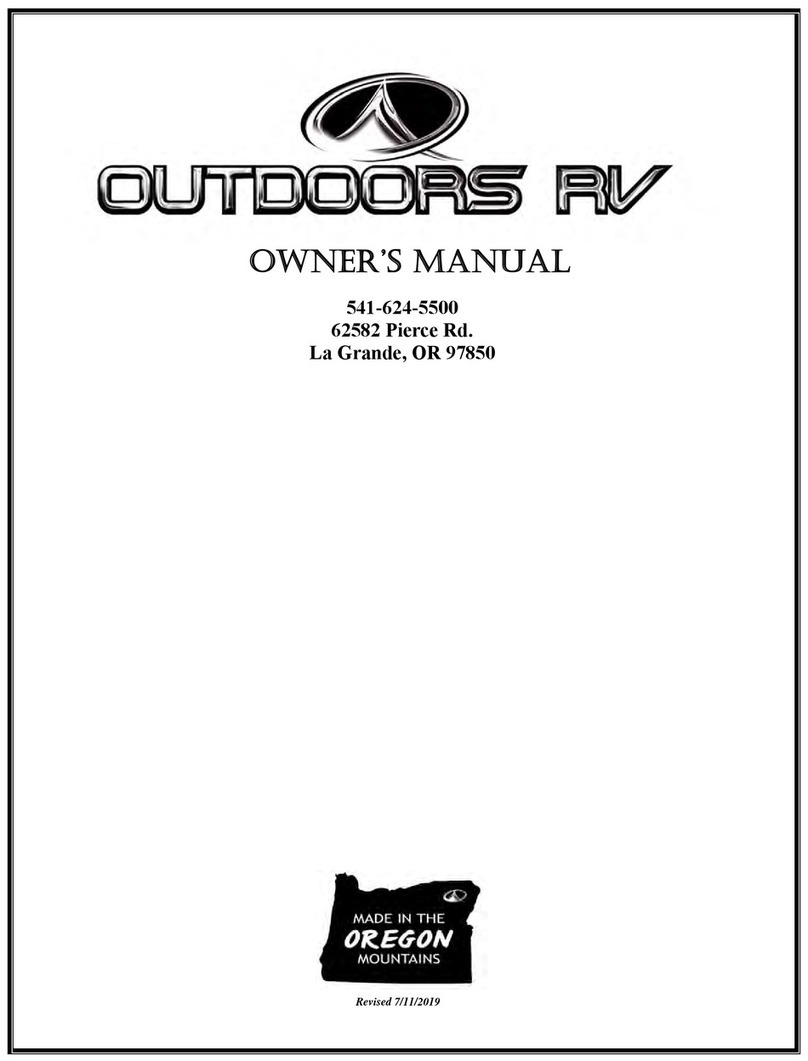
LIMITED ONE YEAR WARRANTY
Outdoors RV manufacturing Warrants for a period on one (1) year from the date of purchase that
the trailer manufactured and assembled by Outdoors RV Manufacturing shall
be free from defects in materials and workmanship supplied and attributable to Outdoors RV.
Except as specifically excluded below.
Outdoors RV, at its sole discretion, reserves the right to substitute parts or components of
substantially equal quality , touch up cosmetic flaws, make design and or manufacturing
improvements as the remedy under this Limited warranty. All owners (original or subsequent) must
be properly registered with Outdoors RV Manufacturing to be considered for eligibility.
This Limited Warranty may be transferred during the one (1) year term by the original owner to a
subsequent purchaser. The limited one (1) year warranty, however, shall in no way be extended
beyond the one (1) year from the original date of purchase by reason of the transfer from the
original consumer purchaser to any subsequent purchaser (s). The subsequent purchaser(s) also
has an obligation to notify Outdoors RV immediately upon the transfer of the warranty and to
provide proof of purchase within the one (1) year.
Warranty Exclusions
This limited Warranty and the obligations stated herein shall not apply to:
1. Trailers used for business, rental, commercial, or disaster relief purposes other than
recreational travel and family camping.
2. Trailers which are not originally sold through an authorized Outdoors RV dealer
(i.e. sold through auction, repossession, salvage or otherwise "distressed" condition).
3. Equipment, products, components, appliances, or accessories not manufactured by
Outdoors RV Manufacturing whether or not warranted, including but not limited to, tires,
batteries, and other installed equipment or accessories.
4. Damage or loss caused in whole or part by misuse, abuse, neglect, theft, vandalism,
trailer modification, improper customer or dealer installation, incorrect line voltage, un-
authorized repair or failure to follow instructions supplied with the recreational vehicle.
5. Damage or loss caused in whole or in part by any unauthorized attachments,
modifications or alterations to the structure, body, pin box, or frame of the recreational
vehicle including but not limited to trailer hitches for towing, or platforms for supporting
cargo.
6. Any upholstery damage including, but not limited to tears, punctures, or misuse.
7. Any fading or discoloring of fabrics, carpet, or floor roll goods.
8. Routine maintenance including, without limitation, caulking, recaulking and waxing of
the body of the recreational vehicle, tightening screws, brake adjustments, latches,
locks, changing fuses, or light bulbs, and maintaining the air conditioning and heating
systems.
3




























